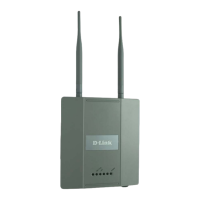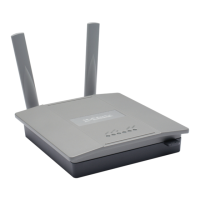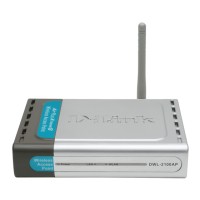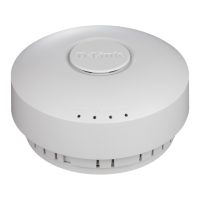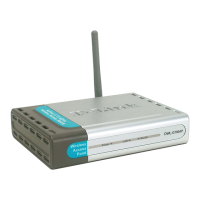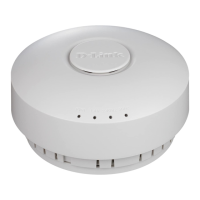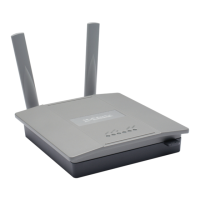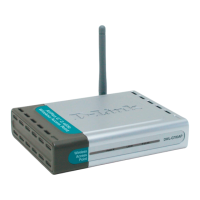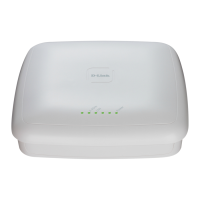
Do you have a question about the D-Link DWL-3600AP and is the answer not in the manual?
| Frequency band | 2.4 GHz |
|---|---|
| Cabling technology | 10/100/1000Base-T(X) |
| Networking standards | IEEE 802.11g, IEEE 802.11n, IEEE 802.3, IEEE 802.3ab, IEEE 802.3af, IEEE 802.3u |
| Ethernet LAN data rates | 10, 100, 1000 Mbit/s |
| Maximum data transfer rate | 300 Mbit/s |
| Quality of Service (QoS) support | Yes |
| Data transfer rate | 1 Gbit/s |
| Wireless technology | 802.11 b/g/n |
| Antennas quantity | 2 |
| Antenna gain level (max) | 4.7 dBi |
| Internal | No |
| Certification | FCC, CE |
| LED indicators | LAN, Power, WLAN |
| Interface | RJ-45 |
| WAN connection | Ethernet (RJ-45) |
| Security algorithms | 128-bit WEP, 64-bit WEP, SSID, WPA, WPA2 |
| Storage temperature (T-T) | -20 - 65 °C |
| Operating temperature (T-T) | 0 - 40 °C |
| Storage relative humidity (H-H) | 5 - 95 % |
| Operating relative humidity (H-H) | 10 - 90 % |
| Power supply | 8 W |
| Input current | 2.5 A |
| AC input voltage | 5 V |
| Weight | 635 g |
|---|---|
| Dimensions (WxDxH) | 203 x 203 x 48 mm |
Details the structure and contents of the Administrator's Guide.
Lists related documentation for Unified Access Point software.
Explains symbols and formatting used in the guide.
Describes the online help available within the UAP Administration UI.
Specifies the minimum hardware and software requirements for the administrator's computer.
Details the necessary hardware and software for wireless clients to connect.
Explains how the AP obtains IP addresses via DHCP or static configuration.
Provides step-by-step instructions for the initial installation of the UAP.
Covers initial configuration of the access point's fundamental settings.
Guides on how to retrieve the AP's IP address using the Command Line Interface.
Details how to configure the wired network interface settings, including VLANs.
Explains how to set up 802.1X authentication for network access control.
Outlines steps to confirm the access point is correctly installed and functional.
Covers setting up security for wireless client access on the AP.
Displays current wired and wireless interface settings of the UAP.
Shows real-time system events and log messages generated by the AP.
Provides statistics on data transmitted and received by the AP.
Lists clients currently associated with the access point.
Shows status and statistics for TSPEC clients.
Displays information about detected unauthorized access points.
Covers saving and importing lists of recognized access points.
Shows DHCP responses learned by the UAP from network switches.
Provides summary information about TSPEC sessions.
Displays information on accepted and rejected TSPEC traffic streams.
Details packets and bytes transmitted/received on radio interfaces.
Shows the status of email alerts sent based on syslog messages.
Configures wired interface settings like IP, VLAN, and DHCP.
Configures aspects of the wireless LAN, including 802.11 mode and channel.
Adjusts radio parameters affecting electromagnetic wave behavior.
Allows scheduling of VAPs or radios to be operational during specific times.
Associates scheduler profiles with radio or VAP interfaces for activation.
Configures virtual access points (VAPs) for segmented wireless networks.
Enables connecting multiple APs wirelessly for network expansion.
Manages network access based on wireless client MAC addresses.
Sets network utilization thresholds to manage wireless performance.
Explains standalone vs. managed modes and transitioning between them.
Sets up 802.1X supplicant user name and password for authentication.
Defines rules to authorize specific hosts for AP management interface access.
Sets up Simple Network Management Protocol for device monitoring.
Configures HTTP and HTTPS access, including SSL certificate management.
Enables or disables Secure Shell (SSH) access to the AP CLI.
Enables or disables Telnet access to the AP CLI.
Optimizes traffic performance by setting parameters on multiple queues.
Configures the AP to send email alerts for specific events and severity levels.
Sets up Network Time Protocol for accurate time synchronization.
Controls access to MIB objects by defining view subtrees.
Combines users into groups with different authorization and access privileges.
Defines multiple users, associates security levels, and configures security keys.
Sets up targets for sending SNMPv3 'inform' messages to the SNMP manager.
Saves the current AP configuration settings to a backup file.
Applies previously saved configuration settings to the AP.
Covers resetting to factory defaults and rebooting the access point.
Explains the process of updating the access point's firmware.
Configures and manages wireless packet capture for analysis.
Sets bandwidth limits and applies ACLs/DiffServ policies per VAP.
Creates and configures Access Control Lists for traffic filtering.
Defines classes for traffic classification based on various criteria.
Applies policies to traffic classes for differentiated QoS treatment.
Displays the applied QoS settings for each associated client.
Applies QoS settings from RADIUS server for WPA Enterprise clients.
Overview of managing APs within a cluster for unified administration.
Notes on clustering APs with different radio configurations.
Manages cluster members, including starting/stopping clustering.
Procedure to remove an AP from an active cluster.
Steps to add a standalone AP back into a cluster.
Accessing detailed information for individual APs within a cluster.
Accessing an AP's web interface directly via its IP address in a URL.
Displays information about client stations associated with cluster APs.
Allows sorting of session data by specific indicators like signal strength.
Manages automatic radio channel assignment within a cluster.
Controls the automatic channel assignment feature for the cluster.
Shows current channel assignments and allows locking APs to specific channels.
Displays the planned channel assignments and their proposed changes.
Customizes channel plan parameters like interference reduction thresholds.
Shows neighboring APs within the cluster's wireless range.
Provides detailed statistics for a specific cluster member AP.
Lists the default configuration settings for a new Unified Access Point.
Example of configuring a Virtual Access Point with specific settings.
Example of configuring radio parameters like mode, channel, and power.
Example of setting up a Wireless Distribution System link between APs.
Example of configuring a cluster with two APs and enabling auto channel reassignment.
Example of enabling client QoS and applying ACL/DiffServ policies.

